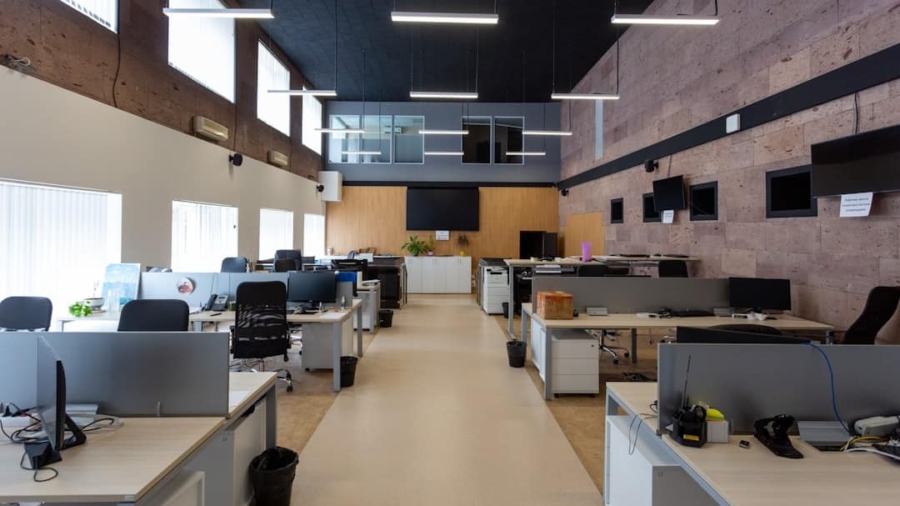The advent of 5G technology marks a significant leap in the evolution of mobile telecommunications, promising to revolutionize how we connect, communicate, and interact with the digital world. As the fifth generation of mobile networks, 5G is designed to provide faster data speeds, lower latency, and greater capacity than its predecessors. This new technology is not merely an incremental upgrade; it represents a paradigm shift that will enable a plethora of applications and services that were previously unimaginable.
The deployment of 5G networks is already underway in many parts of the world, with telecommunications companies racing to establish infrastructure that can support this next-generation connectivity. 5G technology operates on a different set of frequencies compared to 4G, utilizing higher frequency bands known as millimeter waves. These frequencies allow for the transmission of vast amounts of data at unprecedented speeds.
However, the implementation of 5G is not without its challenges. The higher frequency signals have a shorter range and are more susceptible to interference from physical obstacles like buildings and trees. To overcome these limitations, a denser network of small cells is required, which will ultimately lead to improved coverage and performance.
As cities and rural areas alike begin to embrace this technology, the implications for various sectors are profound, paving the way for innovations that will shape our future.
Key Takeaways
- 5G technology promises faster speeds and lower latency, revolutionizing the way we connect and communicate.
- Enhanced mobile gaming and entertainment experiences will be possible with 5G, offering more immersive and interactive content.
- Improved remote work and productivity will be facilitated by 5G, enabling seamless connectivity and collaboration from anywhere.
- The expansion of Internet of Things (IoT) devices will be accelerated by 5G, leading to more interconnected and smart environments.
- The evolution of augmented reality (AR) and virtual reality (VR) will be propelled by 5G, opening up new possibilities for immersive experiences and applications.
Faster Speeds and Lower Latency
One of the most touted benefits of 5G technology is its ability to deliver significantly faster data speeds compared to previous generations. While 4G networks typically offer download speeds ranging from 10 to 100 Mbps, 5G has the potential to reach speeds exceeding 10 Gbps under optimal conditions. This dramatic increase in speed opens up new possibilities for data-intensive applications, such as high-definition video streaming, real-time gaming, and large file transfers.
For instance, downloading a full-length movie could take mere seconds rather than minutes, fundamentally changing how we consume media. In addition to faster speeds, 5G technology boasts remarkably low latency, which refers to the time it takes for data to travel from one point to another. Latency in 4G networks can range from 30 to 50 milliseconds, while 5G aims to reduce this figure to as low as 1 millisecond.
This near-instantaneous response time is crucial for applications that require real-time interaction, such as autonomous vehicles and remote surgery. For example, a surgeon operating a robotic arm from hundreds of miles away can perform delicate procedures with precision thanks to the minimal delay in communication between the surgeon’s commands and the robot’s actions. Such advancements not only enhance user experiences but also pave the way for innovations that rely on instantaneous data exchange.
Enhanced Mobile Gaming and Entertainment

The gaming industry stands to benefit immensely from the capabilities offered by 5G technology. With faster speeds and lower latency, mobile gaming experiences can be transformed into immersive environments that rival traditional console and PC gaming. Gamers will be able to enjoy high-quality graphics and seamless gameplay without the lag that often plagues online multiplayer experiences.
Titles that require quick reflexes and real-time strategy will become more accessible on mobile devices, allowing players to engage in competitive gaming on-the-go. Moreover, 5G enables cloud gaming services to flourish. Platforms like Google Stadia and NVIDIA GeForce NOW can stream high-fidelity games directly to mobile devices without the need for powerful hardware.
This means that even users with entry-level smartphones can access cutting-edge games without investing in expensive consoles or PCs. The ability to play graphically intensive games anywhere with a stable connection will not only expand the gaming audience but also encourage developers to create more ambitious titles tailored for mobile platforms. As a result, the landscape of mobile entertainment will evolve dramatically, offering users unprecedented access to a diverse array of gaming experiences.
Improved Remote Work and Productivity
The COVID-19 pandemic accelerated the shift towards remote work, highlighting the need for robust digital infrastructure that supports collaboration and productivity from anywhere. With the rollout of 5G technology, remote work is set to become even more efficient and effective. The enhanced speeds and reduced latency provided by 5G networks facilitate smoother video conferencing, allowing teams to communicate in real-time without interruptions or delays.
This improvement is particularly beneficial for businesses that rely on virtual meetings and collaborative tools, as it fosters a more engaging and productive work environment. Additionally, 5G technology supports advanced applications that can further enhance productivity in remote work settings. For instance, augmented reality (AR) tools can be utilized for virtual training sessions or collaborative design projects, enabling employees to visualize complex concepts in real-time.
The ability to share large files quickly and efficiently also streamlines workflows, reducing downtime associated with file transfers. As organizations continue to adapt to hybrid work models, the integration of 5G technology will play a crucial role in ensuring that employees remain connected and productive regardless of their physical location.
Expansion of Internet of Things (IoT) Devices
The Internet of Things (IoT) refers to the interconnected network of devices that communicate with each other over the internet, ranging from smart home appliances to industrial machinery. The deployment of 5G technology is expected to significantly accelerate the growth of IoT devices by providing the necessary bandwidth and connectivity required for seamless communication between these devices. With its ability to support a massive number of connections simultaneously—potentially up to one million devices per square kilometer—5G will enable smart cities and homes to flourish.
For example, smart cities can leverage 5G technology to enhance urban infrastructure through connected traffic lights, waste management systems, and public transportation networks. These systems can communicate in real-time, optimizing traffic flow and reducing congestion while improving overall efficiency. In residential settings, smart home devices such as thermostats, security cameras, and appliances can operate more effectively with 5G connectivity, allowing homeowners to monitor and control their environments remotely.
As IoT devices become increasingly integrated into our daily lives, the impact of 5G technology will be felt across various sectors, driving innovation and improving quality of life.
Evolution of Augmented Reality (AR) and Virtual Reality (VR)

The realms of augmented reality (AR) and virtual reality (VR) are poised for significant advancements with the introduction of 5G technology. Both AR and VR rely heavily on high-speed data transmission and low latency to deliver immersive experiences that engage users in new ways. With 5G’s capabilities, these technologies can be utilized in various applications ranging from entertainment and education to training simulations and remote collaboration.
In the entertainment sector, AR applications can enhance live events by providing real-time information overlays or interactive experiences for attendees. For instance, concert-goers could use AR glasses or apps on their smartphones to access exclusive content or view additional visual effects during performances. In education, AR can transform traditional learning environments by allowing students to interact with digital content in a more engaging manner.
Imagine students exploring historical sites through AR applications that provide contextual information as they walk through a museum or archaeological site. Similarly, VR experiences can become more accessible and realistic with 5G technology. High-quality VR gaming can be streamed directly to headsets without the need for bulky hardware setups, allowing users to immerse themselves in virtual worlds effortlessly.
Furthermore, VR can be employed in professional training scenarios where individuals can practice skills in simulated environments without any risk. For example, medical students can perform virtual surgeries or pilots can train in flight simulators that replicate real-world conditions—all made possible by the enhanced capabilities of 5G networks.
Advancements in Healthcare and Telemedicine
The healthcare sector stands to gain tremendously from the implementation of 5G technology, particularly in telemedicine and remote patient monitoring. With faster data transmission speeds and lower latency, healthcare providers can conduct virtual consultations with patients more effectively than ever before. This capability is especially crucial for individuals living in remote areas who may have limited access to healthcare facilities.
By utilizing high-definition video conferencing tools powered by 5G networks, doctors can diagnose conditions and provide treatment recommendations without requiring patients to travel long distances. Moreover, remote patient monitoring devices equipped with 5G connectivity can transmit real-time health data back to healthcare providers seamlessly. For instance, wearable devices that track vital signs such as heart rate or blood glucose levels can send alerts if any abnormalities are detected.
This proactive approach allows healthcare professionals to intervene promptly when necessary, potentially preventing serious health complications. Additionally, during emergencies or critical care situations, medical teams can access patient data instantly through connected devices, ensuring timely and informed decision-making. The integration of 5G technology into healthcare also opens doors for innovative treatments such as robotic surgery or teletherapy sessions that require real-time interaction between patients and specialists located miles apart.
As healthcare continues to evolve towards more patient-centered models, the role of 5G will be pivotal in enhancing accessibility and improving overall health outcomes.
Potential Impact on Smart Cities and Urban Development
As urban populations continue to grow, cities face increasing challenges related to infrastructure management, transportation efficiency, and environmental sustainability. The implementation of 5G technology has the potential to transform urban development by enabling smart city initiatives that leverage data-driven solutions for improved quality of life. With its ability to connect vast numbers of devices seamlessly, 5G can facilitate real-time monitoring and management of city resources.
For instance, smart traffic management systems powered by 5G can analyze traffic patterns in real-time and adjust signal timings accordingly to reduce congestion. This not only improves commute times but also decreases emissions from idling vehicles—contributing positively to environmental sustainability efforts. Additionally, smart waste management systems equipped with sensors can optimize collection routes based on real-time data about bin capacity, reducing operational costs while enhancing service efficiency.
Furthermore, public safety initiatives can benefit from enhanced connectivity provided by 5G networks. Surveillance cameras equipped with AI capabilities can analyze footage in real-time for suspicious activities or emergencies, allowing law enforcement agencies to respond swiftly when needed. Public transportation systems can also utilize 5G technology for better coordination between buses or trains and provide commuters with accurate arrival times through mobile applications.
As cities embrace smart technologies powered by 5G connectivity, urban development will increasingly focus on creating sustainable environments that prioritize residents’ needs while addressing pressing challenges associated with rapid urbanization.
In exploring the transformative impact of 5G technology on mobile consumers, it’s interesting to consider how advancements in mobile devices complement this evolution. For instance, the article on the Samsung Galaxy S21 delves into the features of this smartphone that leverage 5G capabilities, enhancing user experience through faster connectivity and improved performance. Together, these developments illustrate a significant shift in how consumers interact with technology in their daily lives.
FAQs
What is 5G technology?
5G technology is the fifth generation of mobile network technology, offering faster speeds, lower latency, and increased capacity compared to previous generations.
How does 5G expand possibilities for mobile consumers?
5G expands possibilities for mobile consumers by providing faster download and upload speeds, enabling seamless streaming of high-definition content, supporting virtual and augmented reality experiences, and facilitating the Internet of Things (IoT) devices.
What are the benefits of 5G for mobile consumers?
The benefits of 5G for mobile consumers include improved network performance, enhanced mobile broadband experiences, support for new and innovative applications, and the potential for transformative technologies such as autonomous vehicles and smart cities.
Will 5G technology replace 4G?
While 5G technology is expected to eventually replace 4G as the dominant mobile network technology, 4G will continue to coexist with 5G for the foreseeable future to ensure widespread coverage and support for legacy devices.
Are there any potential drawbacks or challenges with 5G technology?
Some potential drawbacks or challenges with 5G technology include the need for significant infrastructure upgrades, concerns about potential health effects from increased exposure to radiofrequency radiation, and the potential for increased cybersecurity risks.

